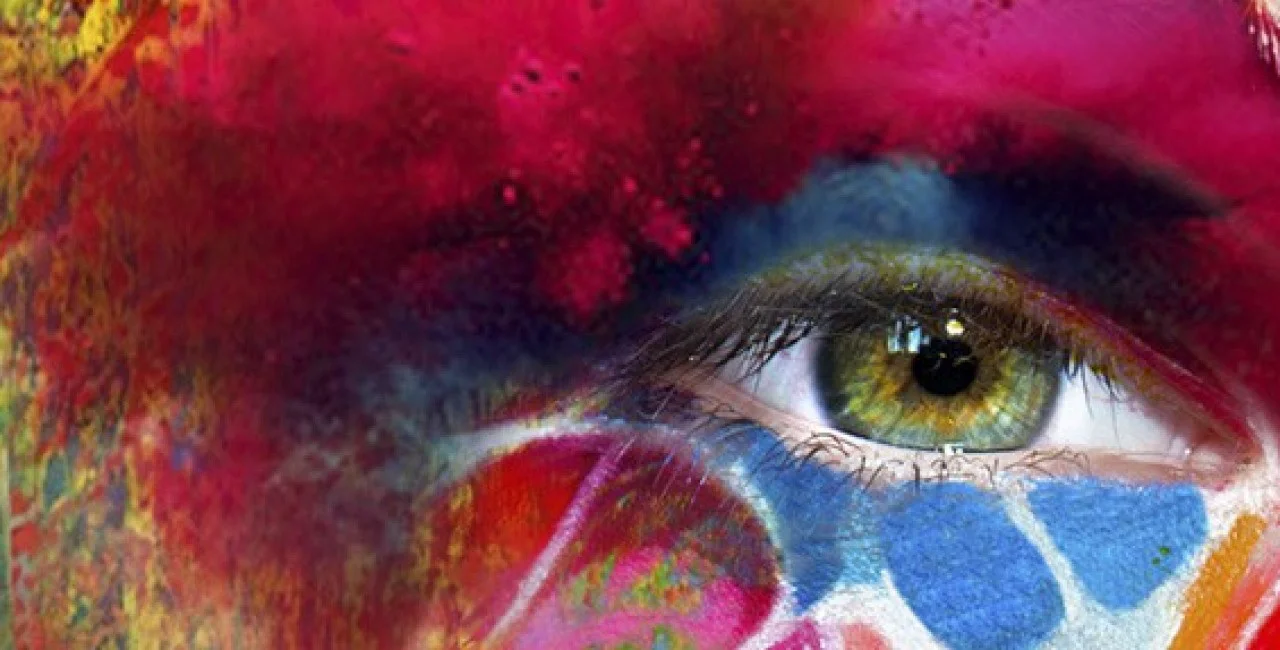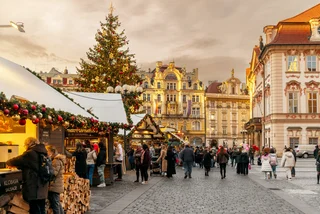Written by Sarah Castille
for Expats.cz
At some point in our childhood, when we first start to apply our newly-formed minds to understanding the world around us, we all stumble upon a question that, for all its simplicity, stumps parents and philosophers alike: “How do I know that what I´m seeing is really the same thing that everyone else is seeing, too?” It´s an elementary question, but a persistent one, and the fact is that no matter how high minded and erudite critical theory may become, no one has really come up with a satisfactory answer. It basically amounts to a fundamentally irresolvable conflict between objectivity and subjectivity, fact and feeling, knowledge and interpretation. In the realm of art theory, this debate touches upon essential questions about the role of art and its influence on the artist, the observer, and, ultimately, society as a whole. Should art reflect and reveal the world around us or should it be a tool of individual expression? Should the artist create works that build universally appealing bridges between people or should each observer have the right to take his own, subjective impressions away from a work of art? The rift between those who believe that art should cling to objective realities and those who see it as a vehicle of subjective interpretation is long standing and has many splintering and diverging fault lines. During the past 150 years, however, it has basically boiled down to a debate between abstraction and realism and, more recently, representations of the hyperreality of a consumerist, media dominated world.
The current exhibit at the Municipal Library´s City Gallery, Resetting: Alternative ways to Objectivity, interjects its own, very contemporary voice into the debate, tending, as the name of the exhibit may suggest, towards the side of those in the objectivity camp. Picking up threads from the New Objectivity movement of the early part of last century, Surrealism, and American Pop Art, it explores the way in which young Czech artists approach the objectivity/subjectivity dilemma within the context of post-Communist transitions and the burgeoning consumer society in the Czech Republic. As is their wont, the Municipal Library has put together an extensive and at times overwhelming conglomeration of works. The mortar binding the exhibit is not necessarily a formal or conceptual unity (apart from the shared medium of painting), but the artists´ shared desire to explore the pathways that allow the artist – and the observer – to escape his or her own subjectivity. Particularly, each of these artists perceives the action of moving away as also being one of doubling back, leaving one´s own subjectivity in order to return and rediscover oneself from the outside, “resetting.” Because achieving this distance is so central to the act of objective perception, the notions of “stepping outside” and “returning” reverberate heavily throughout the exhibit, as the artists play with representations of space, nostalgia, mass reproduction, and socio-political commentary.
Each of the artists approaches this theme in his or her own way, some more successful than others. Some of the most striking and relevant works in the exhibit are found among the artists who toy with space, construction, and materiality, raising questions about the act of observation and the authenticity. For example, in Q’s installation Hold On! I’m Coming!, a painting of a broken-down car is juxtaposed between a found art jumble of car parts and the barely recognizable image of a man constructed from masking tape, brown paint, and torn Metro newspaper pages. While they are joined by a sort of narrative unity (the broken car, its ruptured tire nearby, the by-stander coming to the aid of the helpless car-owner), each element of the installation calls into question the “reality” of the others; the objective authenticity of the real-life tire challenges the imprecise, subjective abstraction of the newspaper man, while the painting hovers somewhere in between, at once interpretation and representation, subjective expression and objective observation.
Frantisek Matousek’s acrylic paintings on torn denim also incorporate tangible, tactile elements to call the reality of personal experience into question, revealing the tension between the subjective nature of memory and the concrete immediacy of the present. The strange, nostalgic, ghost-like quality of his images – children playing on a mattress, a young girl listening to the radio – are distorted by the shredded strands of fabric covering the canvases, rendering them imprecise and disconnected, almost like static pictures on a television screen.
In a different way, Daniel Pitín´s paintings Slepá Bába and Kancelař manipulate images of structure and construction in order to emphasize the social and psychological significance of space, whether it be an institutional environment or a suburban backyard. Paying homage to Edward Hopper´s striking and strict linearity, Pitín´s buildings are also spare, precise, and minimalist, yet their beams and boundaries remain disconnected and fragmentary, challenging the way in which we perceive property and private spaces as part of a solid and natural reality, rather than as a product of arbitrary social distinctions.
As befits an exhibit centered on the concepts of return and resetting, images of childhood are a common theme. They are more often than not disturbingly grotesque, as in Lubomir Typlt’s paintings Boy with a Cat or Boys with a Snail, whose leering, grimacing, sickly green children have a nightmarish quality that the benign pastoralism of their titles would not suggest. Likewise, Jakub Hošek’s goth, tattoo-inspired paintings recall, perhaps inadvertently, the image-based, faddish rebellion of adolescence and the sufferings of young boys passing their evenings in angst-ridden isolation with nothing but a few Metallica-inspired guitar riffs and their unsatisfied teenage urges to keep them company. I could have done without so many samples of Hošek´s work, as well as Veronika Holcová’s witchy, tarot card-esque phantasmagoria. More successful in this arena were Jiři Petrbok´s alternately playful and haunting mixed media collages, with their pastiche of vinyl blotches and lugubrious painted figures, andJana Farmanová´s powerful depiction of the infantization of women and the virgin/whore dichotomy in Ženské hračky – Virginia Woolfová.
No Czech foray into the realm of nostalgia would be complete without allusions to Communism and the social repercussions of the transition to Capitalist society, and in this exhibit we see plenty of mediations on consumer culture and Communist-era institutionalism. Pavel Šmíd explores the pathos of both in Kosmetika, a commentary on the commodification of beauty through advertisement, and Sekretařka, a desolate and pathetic portrayal of a secretary within the bureaucratic office setting typical of the Communist years. Aleš Hudeček also deserves attention for his exploration of the object as commodity and status symbol in Refined Taste I, II, and III.
Objectivity itself is a loose and nebulous subject – spanning everything from 21st century quantum physics to literary theory, how could it not be? One senses that the curator went to lengths to account for this ambiguity by approaching the topic from multiple and diverse angles; unfortunately, what he has achieved in variety is sometimes lacking in consistency, and one is left wondering how certain pieces fit into the overall unity of the show. This is partially due to the exhibition space; the gallery in the Municipal Library is so large that filling the entire space without sacrificing cohesiveness is an ambitious task. However, it seems somewhat irresponsible to allow an exhibit based on even the broadest conceptual theme disintegrate into a fragmentary hodge-podge, no matter what the size of the gallery, and it is all too easy to believe the curator´s assertion that his selection “relied on more or less intuitive factors.” Regardless, you should certainly go see this exhibit – it is definitely not to be missed – but when you do, be certain to be prepared to devote at least an hour to wandering through the gallery and be sure to bring a capacity for selective discrimination.
Resetting: Alternative Ways to Objectivity
City Gallery Prague, The Municipal Library
Until March 23rd
Admission: 60 – 120 CZK












 Reading time: 6 minutes
Reading time: 6 minutes 






















